[Art + Photography] Blood Rose
[Art + Photography] Blood Rose
For centuries now a red rose has been the uncontested symbol for love and beauty, at least in western society, and proof of this is that red roses have been appearing in all kinds of art, literature, poetic works, films and music for over 2 thousand years. It is said that Cleopatra used red rose petals to carpet all her bedroom floor when she received Antony. The beginnings of the symbolic history of the red rose goes all the way back to Roman and Greek mythology, being originally tied to Aphrodite, or Venus, the goddess of love, beauty and passion. In later times the early Christians associated red roses with the virtue of the Virgin Mary. By Shakespeare's time it was already the poetic standard for love, so he famously played with roses in his writings, as in turn also did Gertrude Stein. Scottish poet, Robert Burns, likened his true love to a red rose in his poem Red, Red Rose. And then there is Oscar Wilde:
'If you want a red rose,' said the Tree, 'you must build it out of music by moonlight, and stain it with your own heart's-blood. You must sing to me with your breast against a thorn. All night long you must sing to me, and the thorn must pierce your heart, and your life-blood must flow into my veins, and become mine.'
The Nightingale and the Rose, Oscar Wilde
According to their shade of red these fragrant blossoms are said to communicate varying messages. A single bright red rose signifies everlasting love and passionate romance, while a deep burgundy actually means a love that has yet to be realized or unconscious love, while dark crimson is meant for mourning. A withered red rose, of course, shows that love is over, while a red rosebud is the perfect symbol for youthful love and beauty.
The number of roses has likewise a meaning in itself. One red rose shows passion and love, a couple of tied red roses symbolizes an engagement, a dozen red roses is a gesture of gratitude, while twenty five serve to congratulate someone, but a big bouquet of fifty red roses is an unquestionable manifestation of unconditional love.
During the Victorian era there was even a special language of roses and flowers that evolved as a form of secret communication between lovers forced by the customs of society to maintain their mutual feelings undisclosed.
Red roses can also stand for desire, for the deep throbbing heat of a newborn passion, but additionally they can just as well symbolize courage, power, respect, appreciation or congratulation.
Within a married couple, on the other hand, red roses carry an additional meaning as they are meant to convey abiding domestic bliss and passion. A continuously growing love that maintains its everlasting freshness without monotony.
The subject matter for the following incarnations of a Blood Rose is the original photograph of a blood red rose that can be seen in the second picture below. I tried to experiment with extracting different contrasting textures for the same red rose because the original has some very interesting texture in it (almost waxy, but also velvety), and got some nice results I wanted to share. This first one below has an amazing metallic quality to it that made it the first of the list.
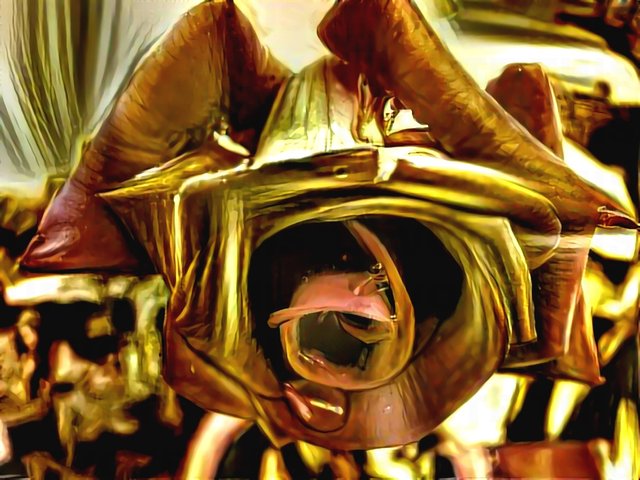
Blood Rose Incarnation 1
A strange coppery alloy of a rose that seems to be...
And below is the photograph of the real Blood Rose, that had been recently rained on (real rain, no, I didn't throw water on it, and the flower was still in its plant stalk).
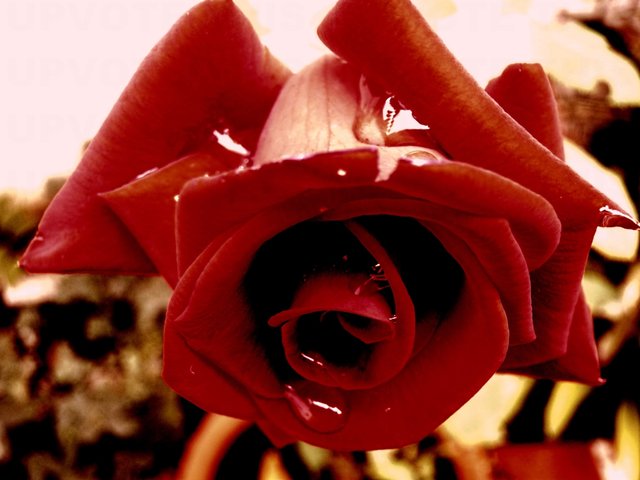
The Blood Rose photograph
The Blood Rose photograph was taken with my faithful Olympus SH-25MR camera, and shot at f/4.3 and 1/200th sec. ISO 1600 setting.
Following are the rest of the other incarnations of a Blood Rose.
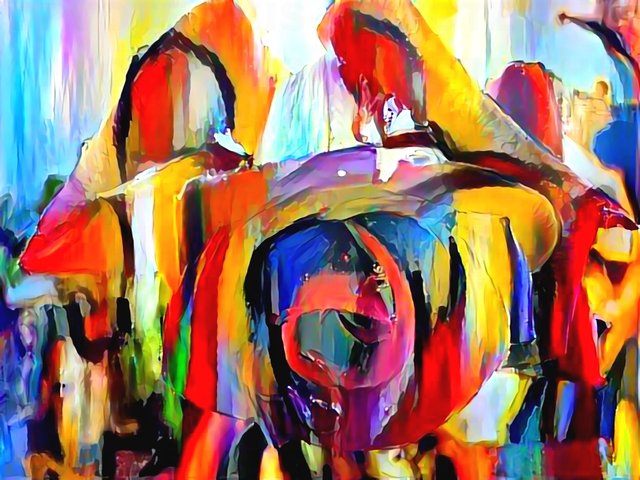
Blood Rose Incarnation 2
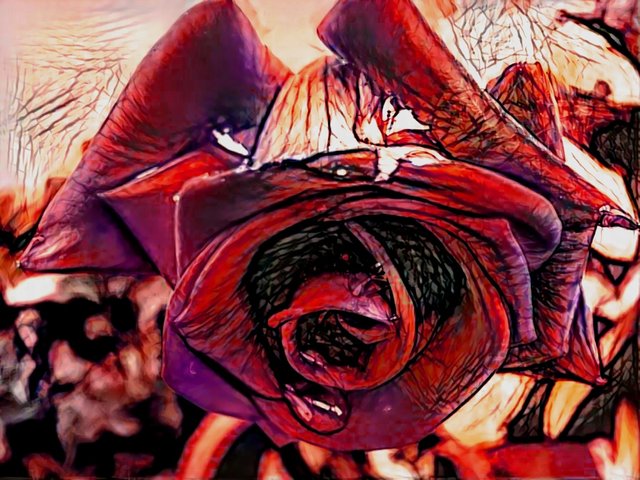
Blood Rose Incarnation 3
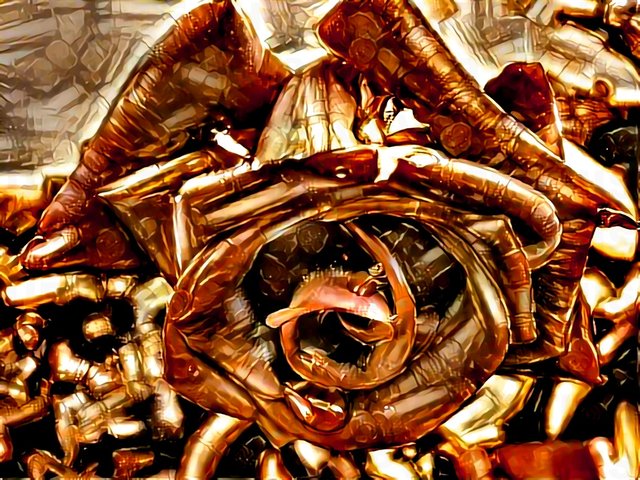
Blood Rose Incarnation 4
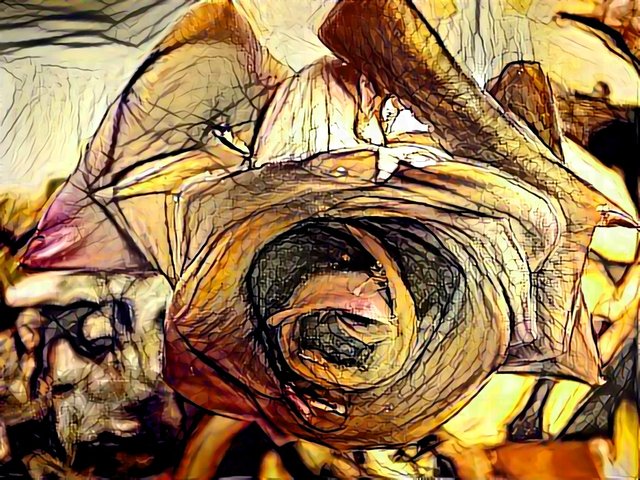
Blood Rose Incarnation 5

Blood Rose Incarnation 6
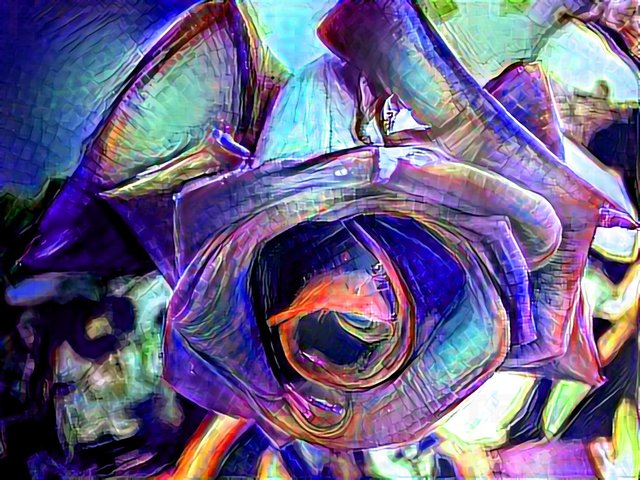
Blood Rose Incarnation 7
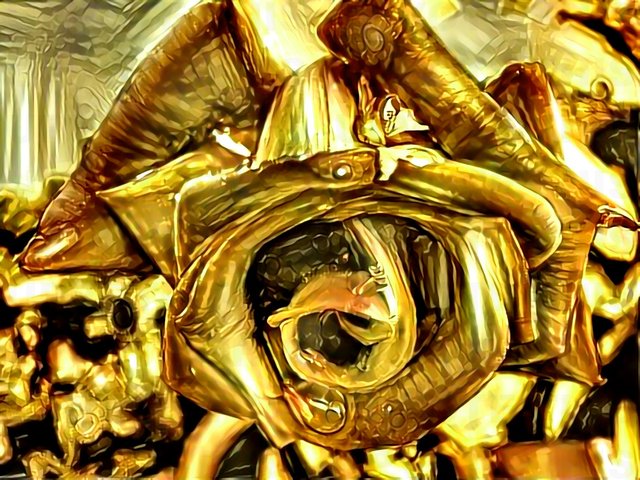
Blood Rose Incarnation 8
Any one of those your favorite? Let me know in the comment section below.
Texture as Photographic subject matter
“I see it all through the lens of my camera—the flurry of movement, the venue staff in black T-shirts, giving orders into their headsets. As I take it all in, my mind weighs the texture, the composition, the possibility of each changing scene, and I struggle to hold back, to keep my finger from pressing too soon. That’s my biggest flaw as a photographer. I’m impatient—trigger-happy. I want the shot now, now, now, click, click, click, and if I could just wait a second more, the moment would really flourish.”
― Emery Lord, Open Road Summer
Texture is one of the most important elements in a good photograph, that sensation that you can reach out and touch that surface on the image and feel it as if it was really there, and when it is used appropriately will enhance the interest the viewer takes in any picture.
In the end the intention of a photograph is to grab the attention of the viewer and to retain it for as long as possible, and texture is one of the most effective elements of composition in achieving this.
The three most relevant aspects in composition for texture photography are patterns, curves and contrast, and mastering these will improve all of your photographs that use texture in them.
Patterns although very useful in attracting and maintaining a person's interest and attention, if they are too simple they won't work as well for this purpose. A better approach in using patterns is to either use several patterns in the same picture used in a way that enhances the subject matter or somehow reinforce each other, or using an element in the picture that breaks the pattern and in so doing becomes the center of interest.
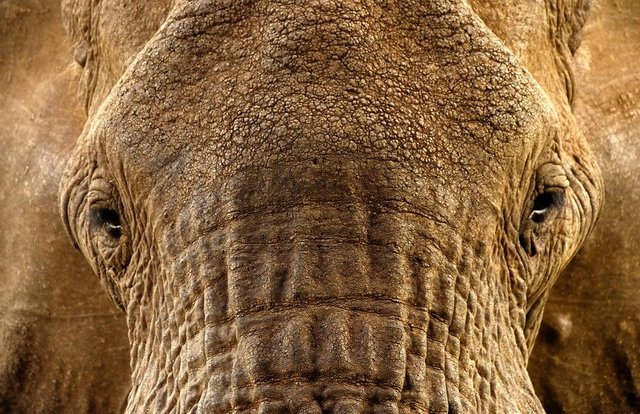
The face of an elephant provides several strong texture patterns
Image source
Curves can sometimes form texture and these can be successfully utilized to support the composition of the photograph, either by using them as leading curves that serve to direct the vision of the viewer towards the center of interest in the image, or as non-leading curves that don't lead into the center of interest of the image but serve informational or emotional purposes in the composition.
The photograph below is a perfect example of leading and non-leading curves. Can you identify them?
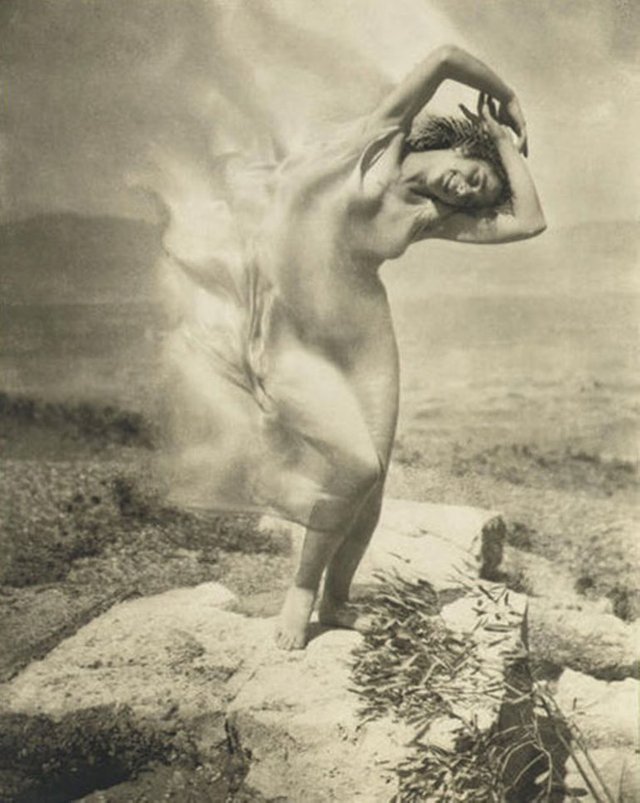
Edward J. Steichen. Wind Fire. Therese Duncan on the Acropolis 1921
Image source
Contrast can be tonal contrast or color contrast, and both can be used to enhance texture in your photographs. Likewise contrast can be used in two different manners in photographs that use textures. First is to take advantage of the contrast within the detail of the texture that makes it stand out, therefore it is a good starting point to use objects or backgrounds that already have a good contrast in their patterns or that contain interesting textures. Secondly, you can select a background that creates a stark contrast with the central texture that is the center of attention, this will make the texture stand out and capture the attention of the viewer. To achieve this, for example, you would need to have textured objects that create a tonal or color contrast with their background. Generally speaking to capture attention grabbing photos it is convenient to find objects that already have good contrast in them and find an adequate angle or illuminate it sideways to enhance the sense of texture.

A road by Tuncay
Image source
The use of textures in your photographs is a complex and extensive subject matter that has many different variables and conditions that need to be mastered so it can provide eye catching photographs, and the information provided here is just a little introduction on that aspect of photography.
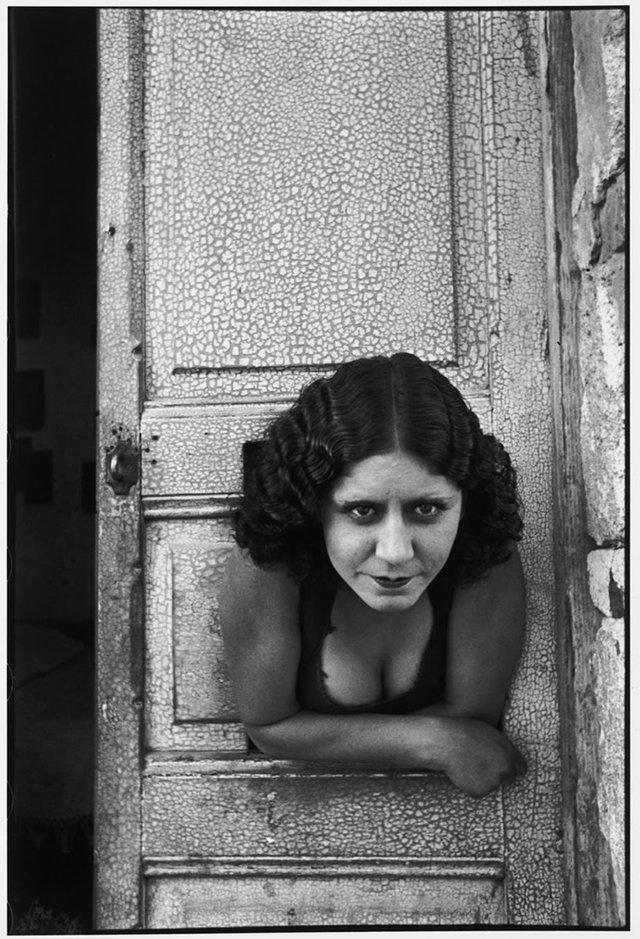
Prostitute of Cuauhtenocztín Street, Mexico City. Henri Cartier-Bresson 1934
Image source
If you are interested in more information regarding the use of texture in photography you can refer to the following pages that will have more in depth explanations and advice:
“For me, the camera is a sketch book, an instrument of intuition and spontaneity.”
― Henri Cartier-Bresson
#art #photography #life #steemsquad #minnowsunite

Feel free to upvote, follow and check my other posts.
All follows will be followed back.
https://steemit.com/@catsmart